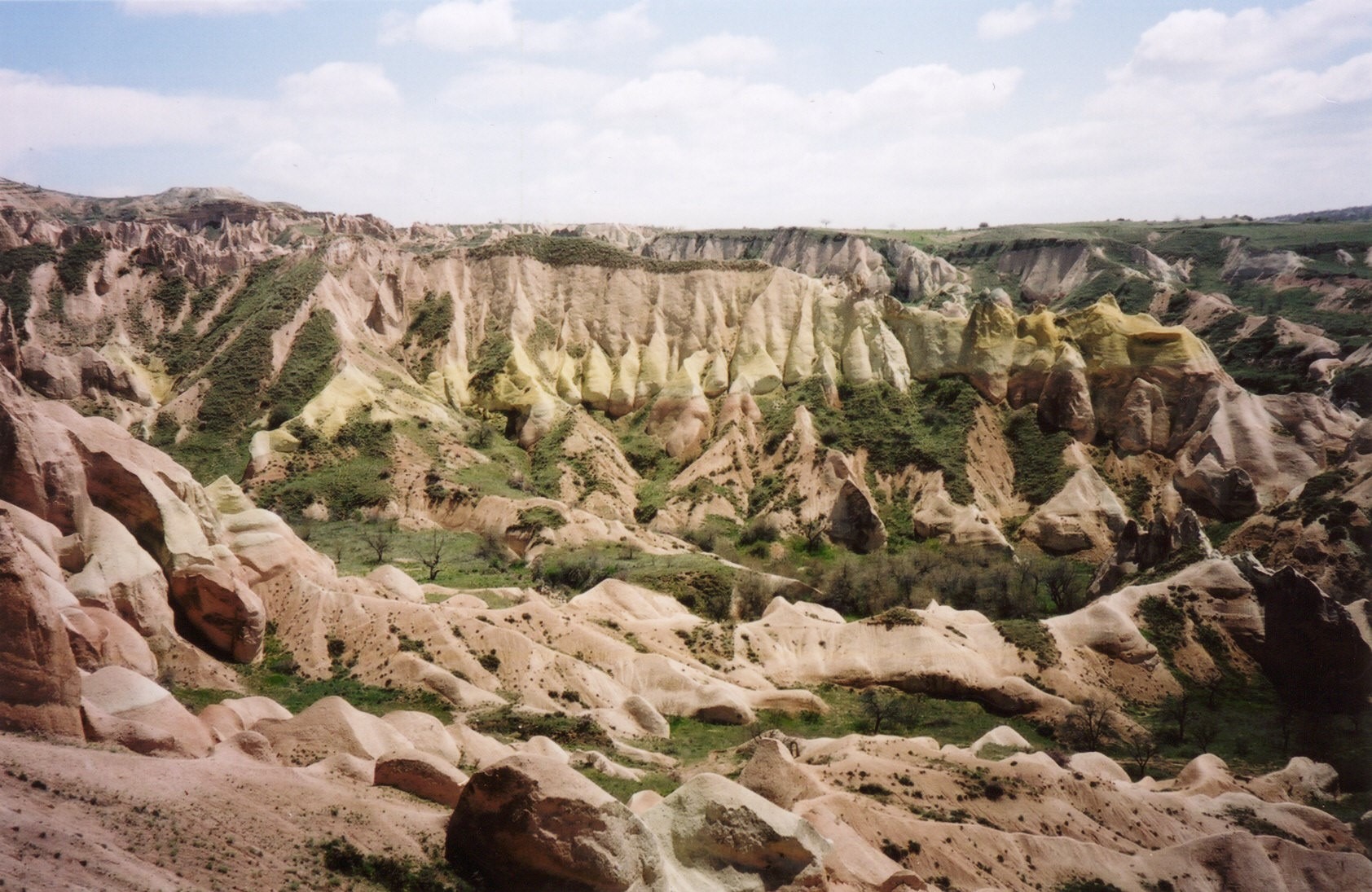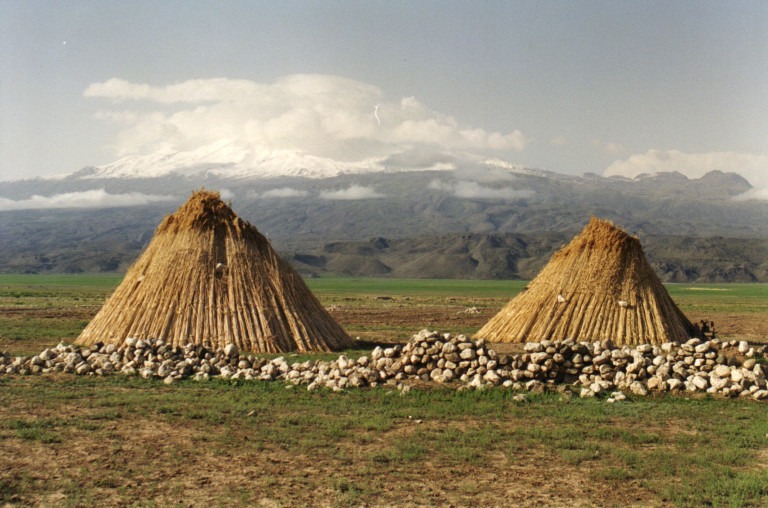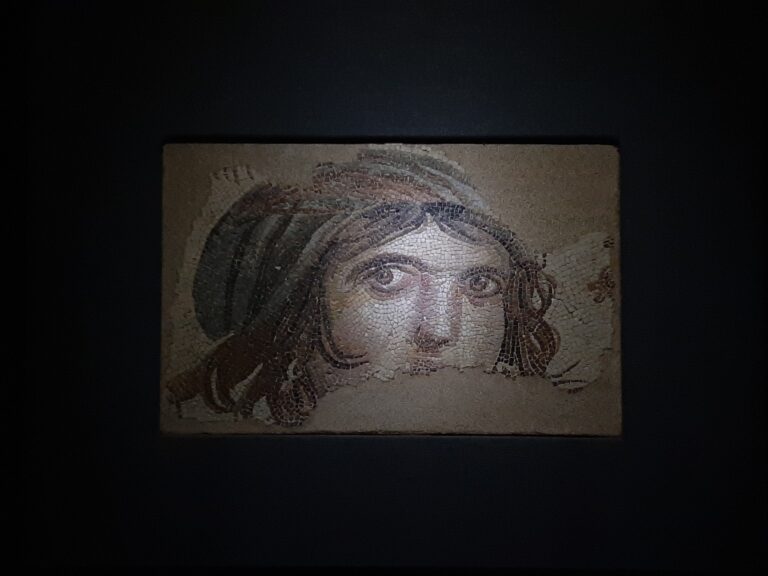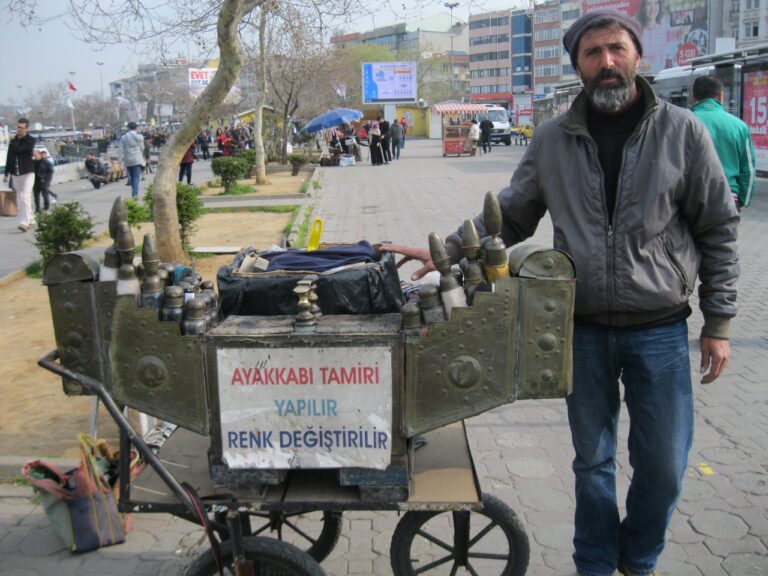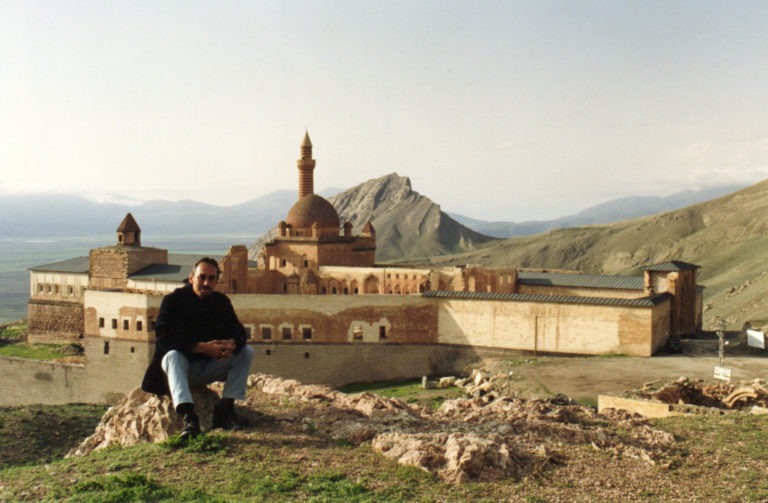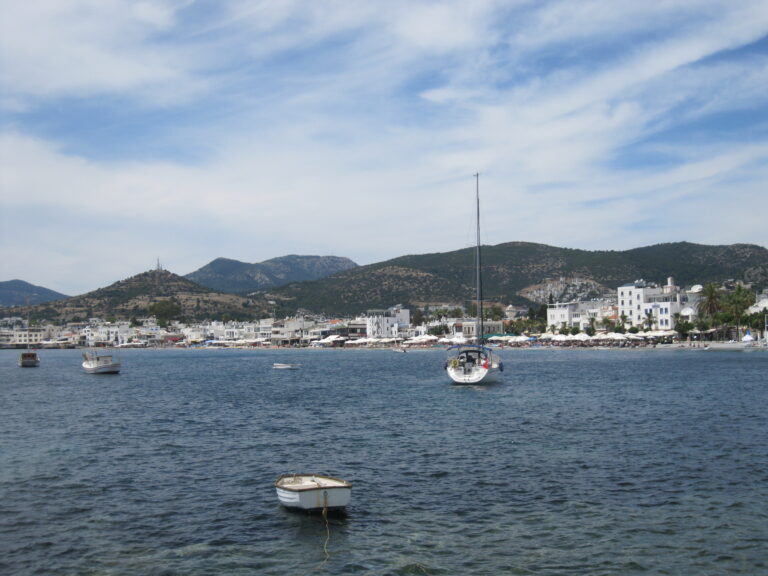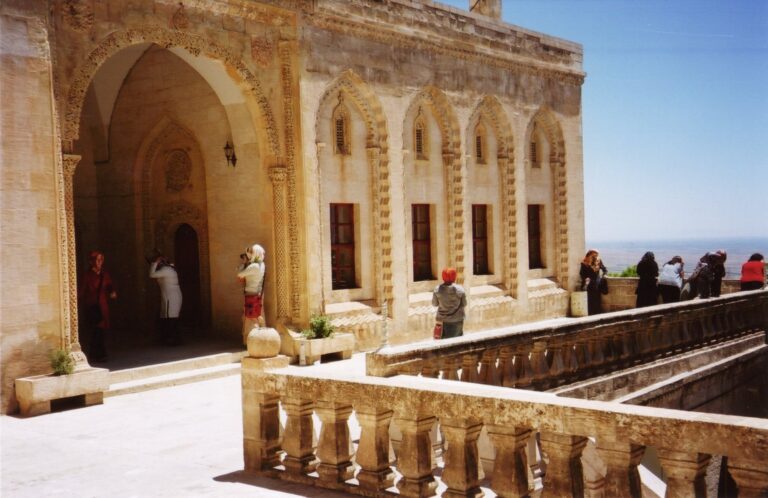19 places to see in Cappadocia (or how to make the most of this extraordinary UNESCO world heritage site)
If you have to ask whether visiting Cappadocia is worth it, then I suggest you scroll on. The same goes for people in Facebook groups who say they wasted their time going to Cappadocia because their balloon flight was cancelled. Or think the best way to enjoy Cappadocia is by doing a flying dress photoshoot. Granted, the balloon flights are fabulous, provided you can see past the other people in the basket (more of that later) but there are dozens of other ways to experience Cappadocia, a truly extraordinary UNESCO World Heritage Site.
The history of Cappadocia
Göreme National Park and the Rock Sites of Cappadocia were inscribed on the UNESCO World Heritage List in 1985. The area is bounded by two extinct volcanoes, Erciyes Dağ, a 3916 metre high mountain at one end and Hasan Dağ (3253 m) at the other. In between is a volcanic landscape sculpted by erosion, forming waves of mountain ridges, valleys and pinnacles studded with peribaca, more fancifully referred to as fairy chimneys. Peribaca were formed when the natural elements came in contact with tufa, soft volcanic rock that toughens when it meets the air.
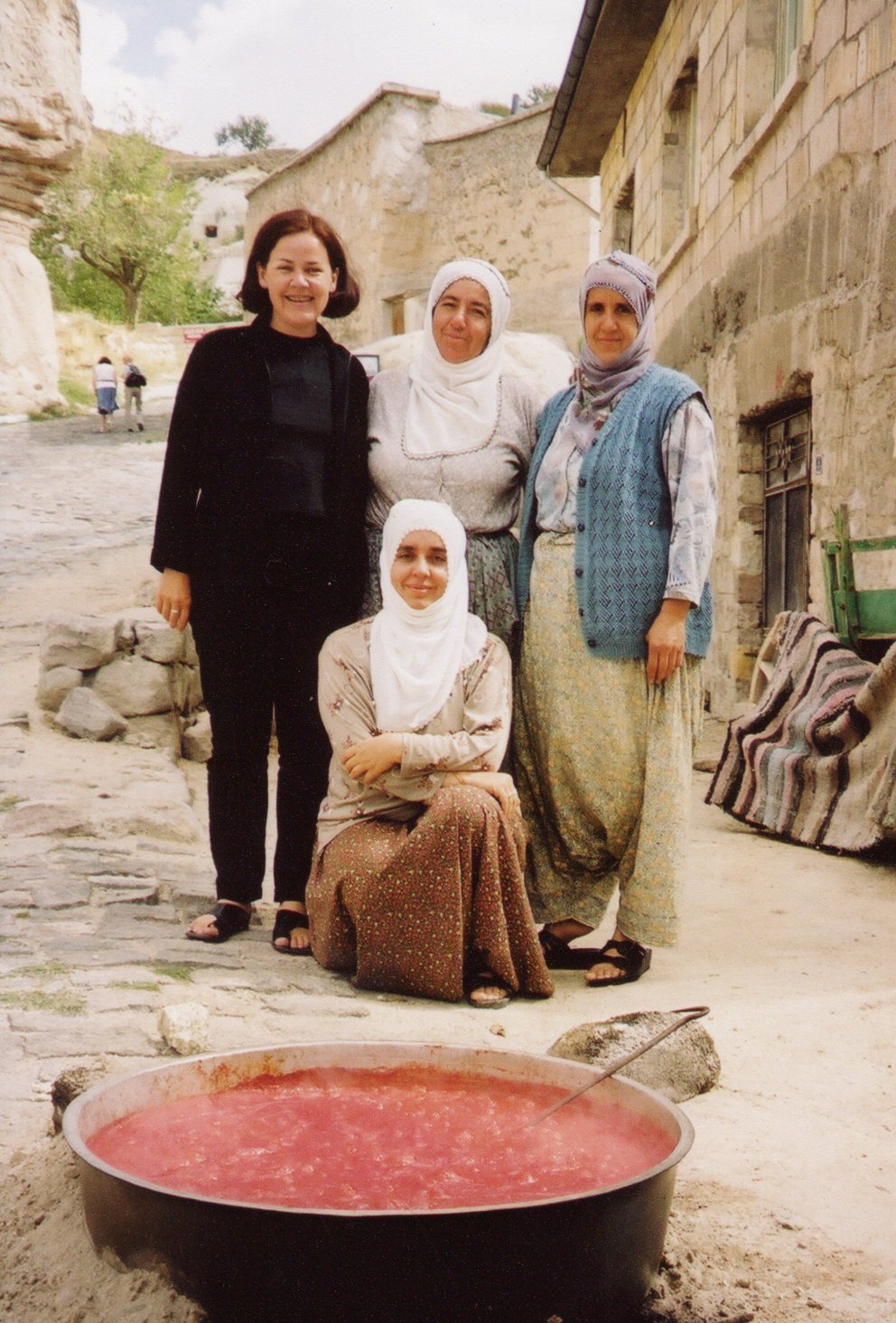
Monastic Christian communities carved out rock-hewn cells, churches, troglodyte villages and subterranean cave complexes across Cappadocia from tufa as early as the 4th century. Over the centuries thousands of people lived, worked and sought sanctuary from invading Arab tribes in this extraordinary cave based world. Many of the religious structures are richly decorated and contain a number of leading examples of the post-iconoclastic Byzantine art period. It’s believed there are hundreds of underground cave complexes below the plains in Cappadocia, the majority yet to be rediscovered.
English-speaking countries were introduced to Cappadocia when it was featured in a January 1958 issue of National Geographic Magazine. The following decade it was the setting for Maria Callas’ famous film Medea and in 2024, over 4.8 million people visited the area.
Despite the impression you get from social media, there’s a lot more to do and see in Cappadocia than balloon flights and flying dress shoots. People also take ATV tours and jeep safaris. Personally, I think they should be banned, and not just because of the damage they do to the environment. Cappadocia is a place best experienced up close, on foot or on horseback, in silent valleys, dissected by canals filled with icy mountain water, and shaded by fruit orchards and vineyards.
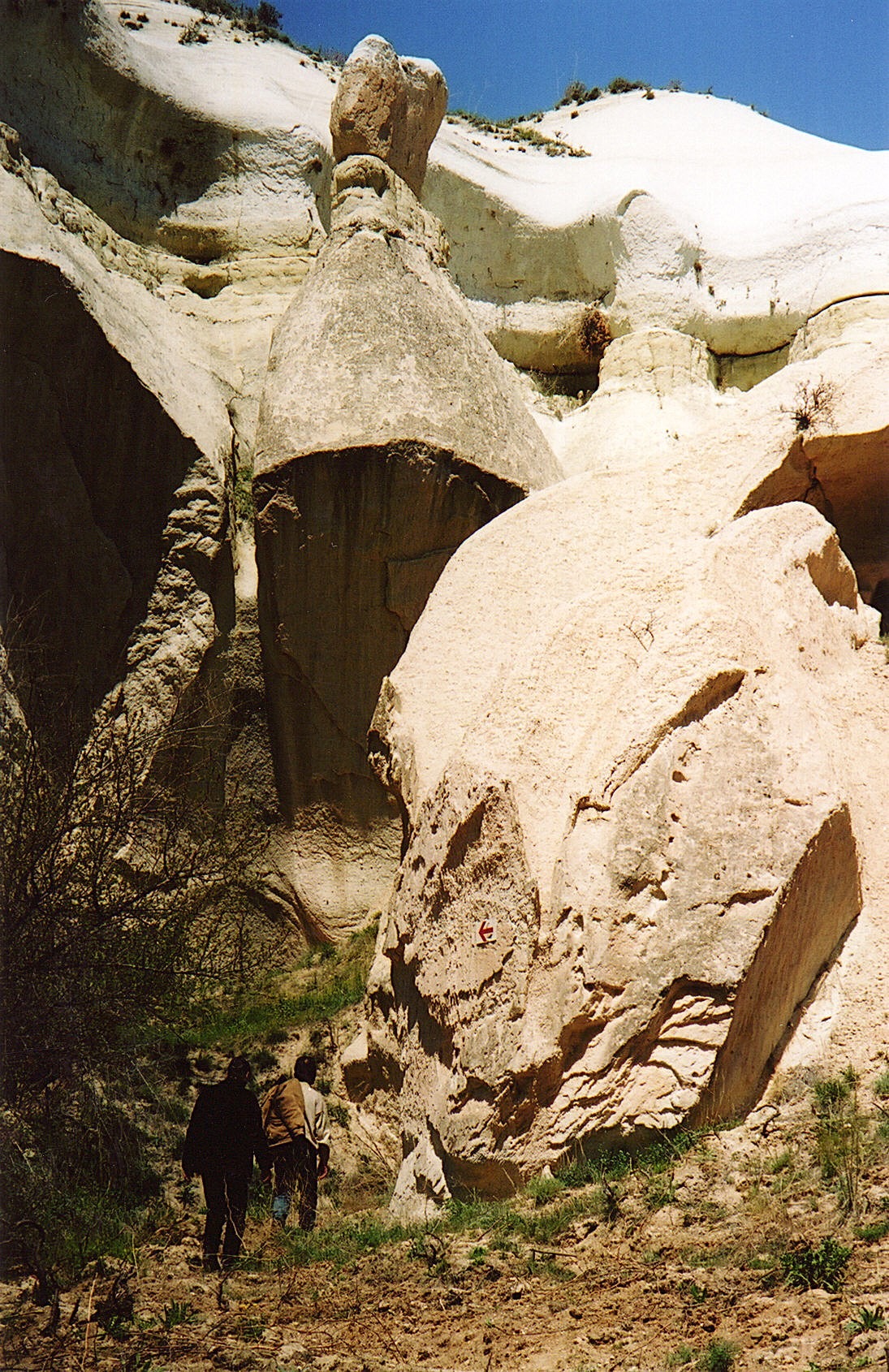
To help you make the most of your trip I’ve written up 19 sights/places in Cappadocia to visit. But first, let’s start with how to get there.
How to get to Cappadocia from Istanbul
The distance between Göreme, one of the most popular tourist destinations in Cappadocia, and Istanbul, is 725km (450 miles). While Turkey’s intercity bus system is clean, efficient and reliable, taking an overnight service from Istanbul to anywhere in Cappadocia is a long slog. I used to do it all the time when money was more of an issue, but these days I prefer the ease and speed of plane travel.
Just as there are two airports in Istanbul, there are two in the Cappadocia region. Planes from Sabiha Gökçen Airport on the Asian side of Istanbul, and Istanbul Airport on the European side of the city, fly to both Kayseri and Nevşehir.
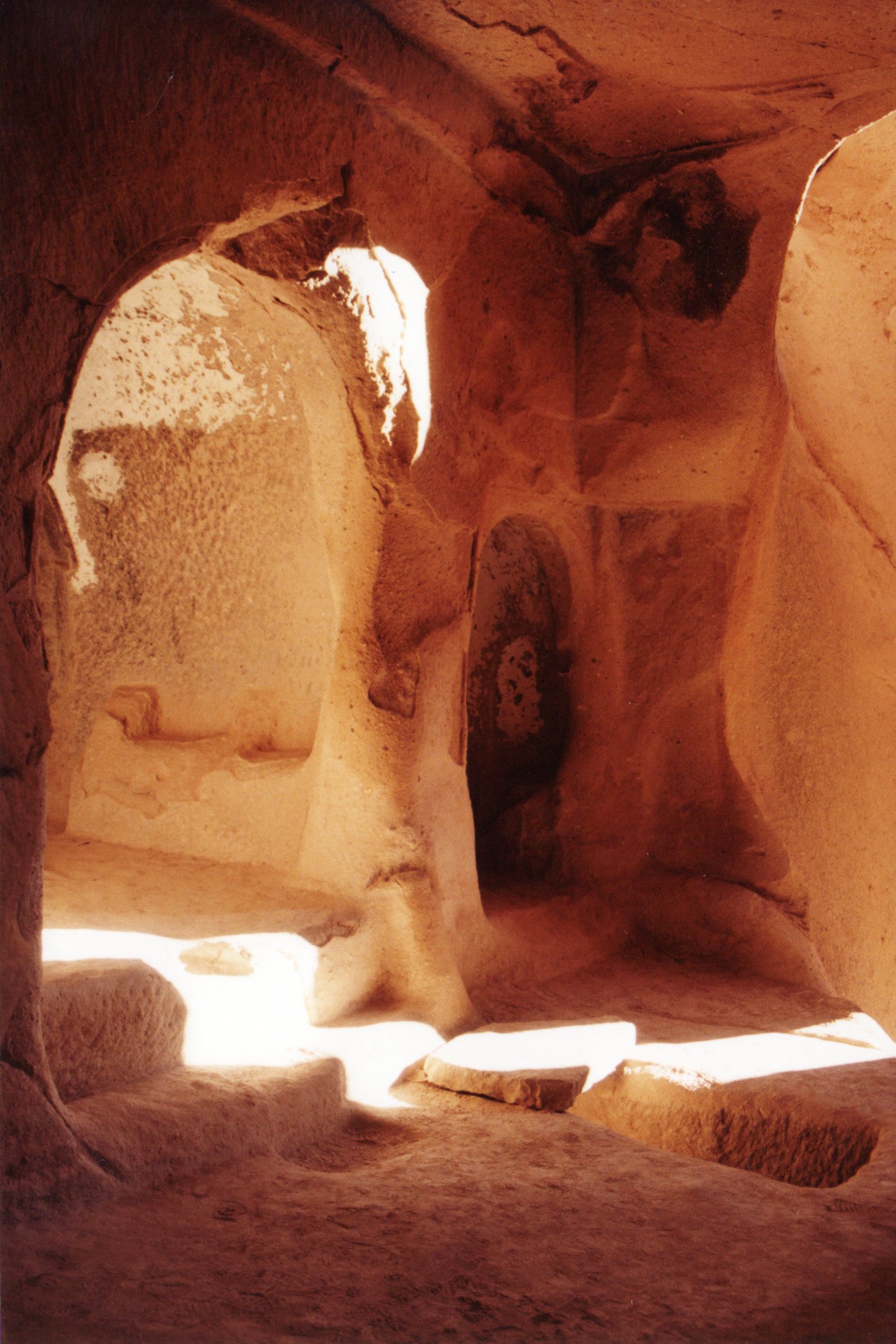
If you’re booking a flight from your home country and plan to transit from Istanbul to either Kayseri and Nevşehir, make sure both flights are operating from the same airport in Istanbul.
There is a public bus you can catch from Nevşehir Airport to the city bus terminal for buses to various Cappadocia destinations. To do the same from Kayseri Airport you’ll need to get a taxi to the Kayseri bus terminal, then a bus from there. For a smoother, faster connection, I recommend you book an airport/hotel transfer from either Kayseri or Nevşehir Airport instead.
One last pre-trip note. Before you leave home check whether you’ll need an evisa to enter Turkey. Here’s everything to know before you take off, including how to buy one from the approved government website so you don’t pay extra.
What to see and where to go in Cappadocia
The following information gives you an idea of just how much Cappadocia has to offer beyond balloons and dresses. The list is alphabetical but I’ve asterisked the places I think you should definitely include in your itinerary. A number of them are underground cave complexes and I recommend you choose the one that appeals to you the most. Some of them are included in daily tours too. Once you’ve decided what you want to see, you’ll need to check the opening hours. First have a look at my section on Museum Passes, to determine the most cost effective one for you.
Avanos*
Located on the banks of the Kızılırmak River, the longest river wholly within Turkey, Avanos has been famous for pottery since around 3000 BCE. Many of the pots you see in local restaurants and pensions are still made here, and you can even try your luck throwing a pot if you like, but be warned, it’s not as easy as it looks. Many of the usta, the masters, have been working since they were very young, like Ahmet Usta who features in my husband’s short documentary The Clay Master of Avanos.
The other thing it’s famous for is the Hair Museum. Some people find the idea and the actual place gross while others, like me, find it fascinating. It’s located under Chez Galip’s pottery shop and contains hair samples from more than 16,000 women, along with their names and addresses. Why they feel compelled to leave a part of themselves behind we’ll never know, but it’s worth a look. I first saw it when I lived in Göreme for two months in 1990. It was so long ago I can’t actually remember if I added any of my hair to the collection, but know people who have.
Çavuşin
When I first stayed in Göreme in 1990, I used to pass Çavuşin when I caught the dolmuş to Avanos for a change of scenery and to drink tea under the willows along the river. A great lump of rock half exposed to the elements marks the spot. That rock is in fact Vaftizci Yahya Kilisesi, the Church of St John the Baptist, one of the oldest churches in Cappadocia. It was built between 964-965 CE, when Çavuşin was home to the Karamanlı, people of Greek descent born in Turkey. They lived here until the population exchange of the 1920s but their legacy lives on in places like Balıklı Monastery in Istanbul. You can read more about them in my article After Utopia.
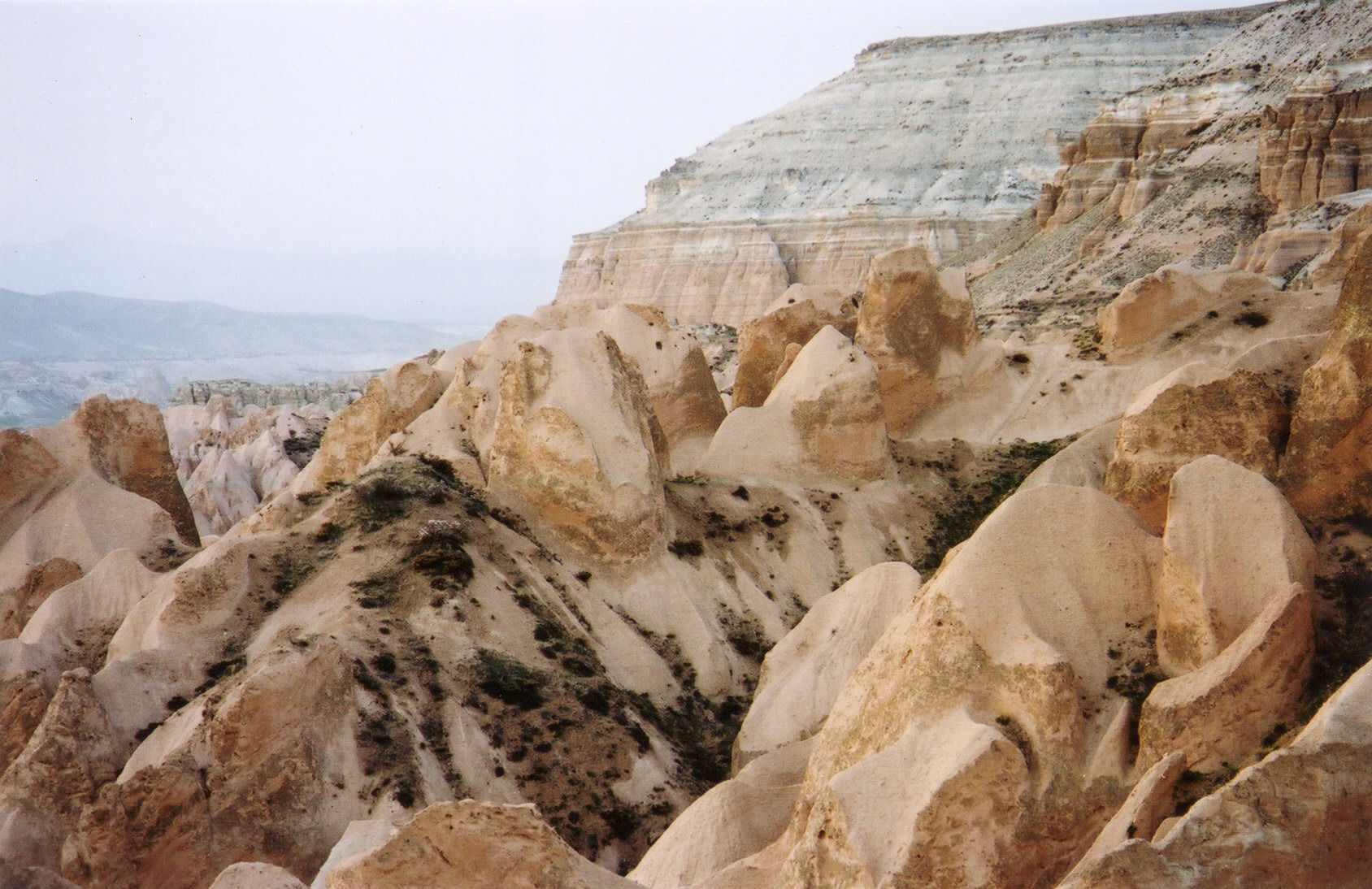
The front façade of the church has been destroyed by erosion and consequently the interior frescos are very faded and damaged. Nonetheless, the triple basilica dedicated to St John the Baptist, carved into the rock, is quite impressive. Çavuşin also makes a great starting point for fascinating hikes lead by Walking Mehmet who I wrote about in my CNN Travel piece, linked in the introduction at the start of this post.
Derinkuyu*
Derinkuyu was discovered by accident in 1963 when a Turkish farmer went in search of his chickens which kept going missing then reappearing like magic. One day he tracked them to an opening in the tufa leading to an 18-storey underground system of connected caves. Derinkuyu opened to tourists in 1967 and is the largest underground cave complex in the Cappadocia region
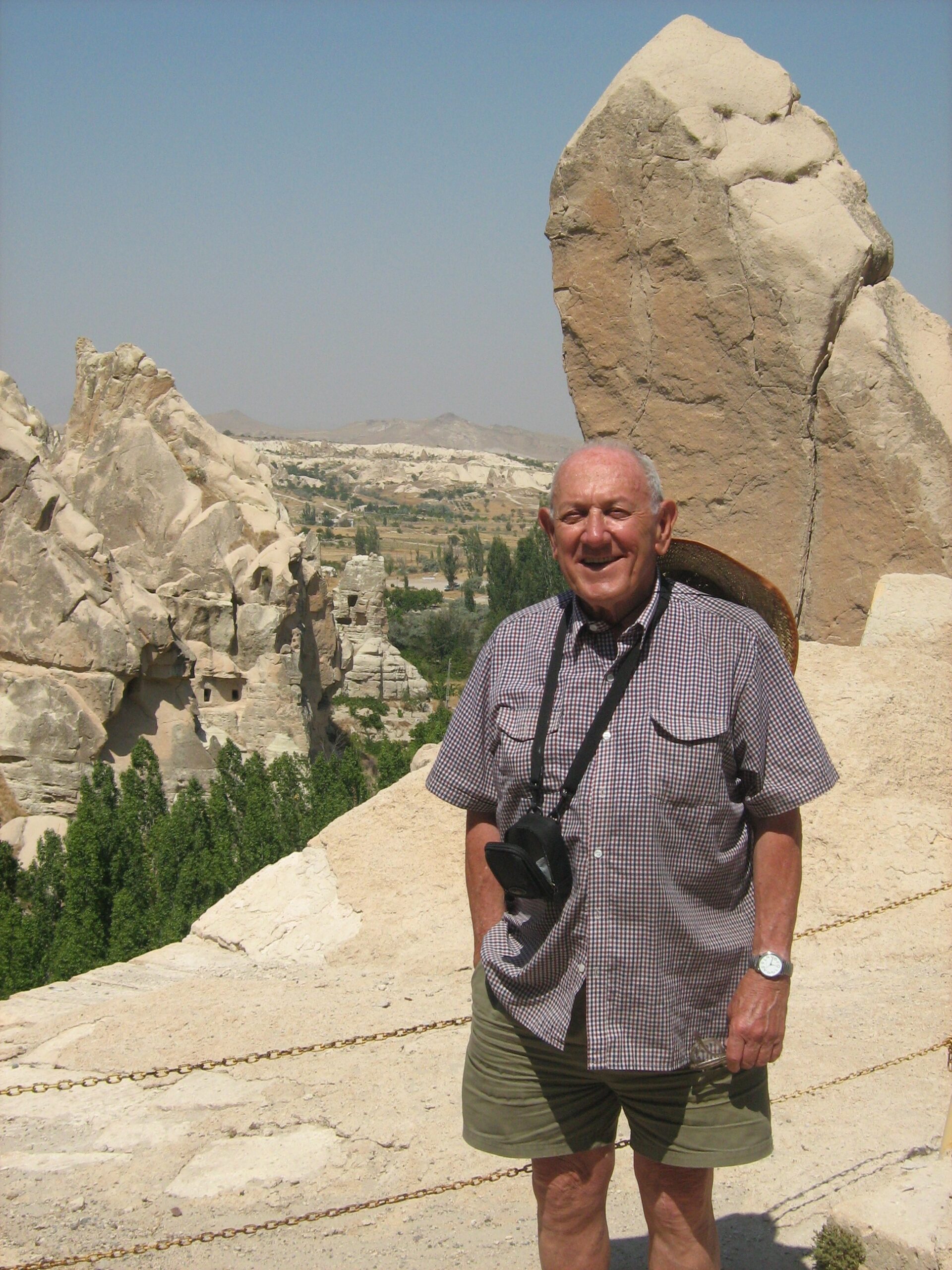
The name Derinkuyu translates to ‘the deep well’ and was never used as a permanent city. Instead it provided safety for local Christians when Arab invaders arrived around the 8th century CE, intent on conquest. Up to 20,000 people could exist underground at a time. You can retrace their steps today, descending 100 metres through the eight floors open to the public, past deep air shafts, empty graves, mills, the remains of stables, wine presses and more.
Although fresh air does enter Derinkuyu, the atmosphere becomes closer and more humid the lower down you go. It’s not recommended if you’re the least bit claustrophobic. The paths are rather twisty and in places you need to duck low hanging rocks. When I went with my Dad in 2007 he was 78 and for the most part remembered to keep his head low. Especially after he forgot and took quite a whack to the forehead. But my Dad was nothing if not tough and soldiered on.
Dervent Vadesi (Derwent or Imagination Valley)
The numerous peribaca in this valley are some of the best formed in Cappadocia. It’s nicknamed Imagination Valley because if you look closely enough, you’ll many take different forms. The camel is easy to spot but you’ll have to look harder to identify seals, birds, the Virgin Mary, various reptilian shapes and even Napoleon’s hat.
Gomeda Vadisi (Gomeda Valley)
This lush fertile valley is known for its pigeon houses and frescoes hidden inside cave churches. It’s popular with hikers so if that’s you, make sure you’re properly equipped with good boots, a hat, plenty of water and a reliable GPS system to get you back. Otherwise contact Walking Mehmet (see hiking article linked in introduction) and ask if he can take you there.
Göreme*
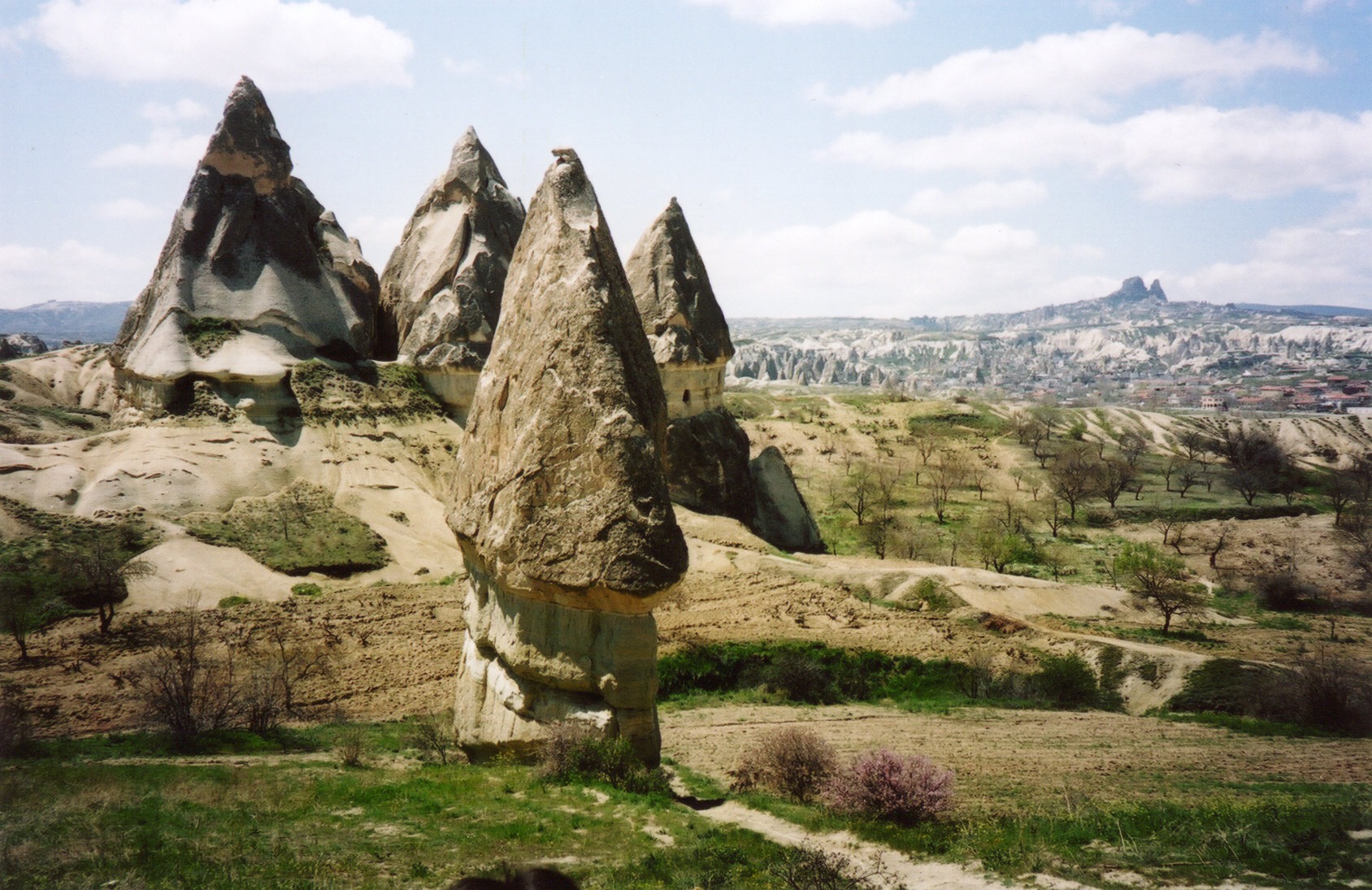
When I first went to Göreme in 1990 it was a small village with only a few dozen family run pensions and hotels, and just a couple of balloon companies. The majority of tourists who went there spoke English because back then, where you stayed depended on which guide book you used. Lonely Planet was for English speakers so Göremeli working in tourism spoke English, while over in Avanos, French was the second language as the village featured heavily in La Routard.
Over time Göreme has become extremely popular with tourists from all over the world and many of the Turks working in tourism are bilingual if not multi. However, although Chinese restaurants now compete with traditional Turkish establishments for custom, the magic of the region remains.
Göreme Open Air Museum (Göreme Açik Hava Müzesi)*
If you do nothing else in Cappadocia, you have to visit the Göreme Open Air Museum. It was included in the World Heritage List by UNESCO in 1985 for good reason. Located in a small valley, the museum holds the largest number of rock-cut chapels and monasteries (more than 30!) in Cappadocia, all carved straight from the tufa.
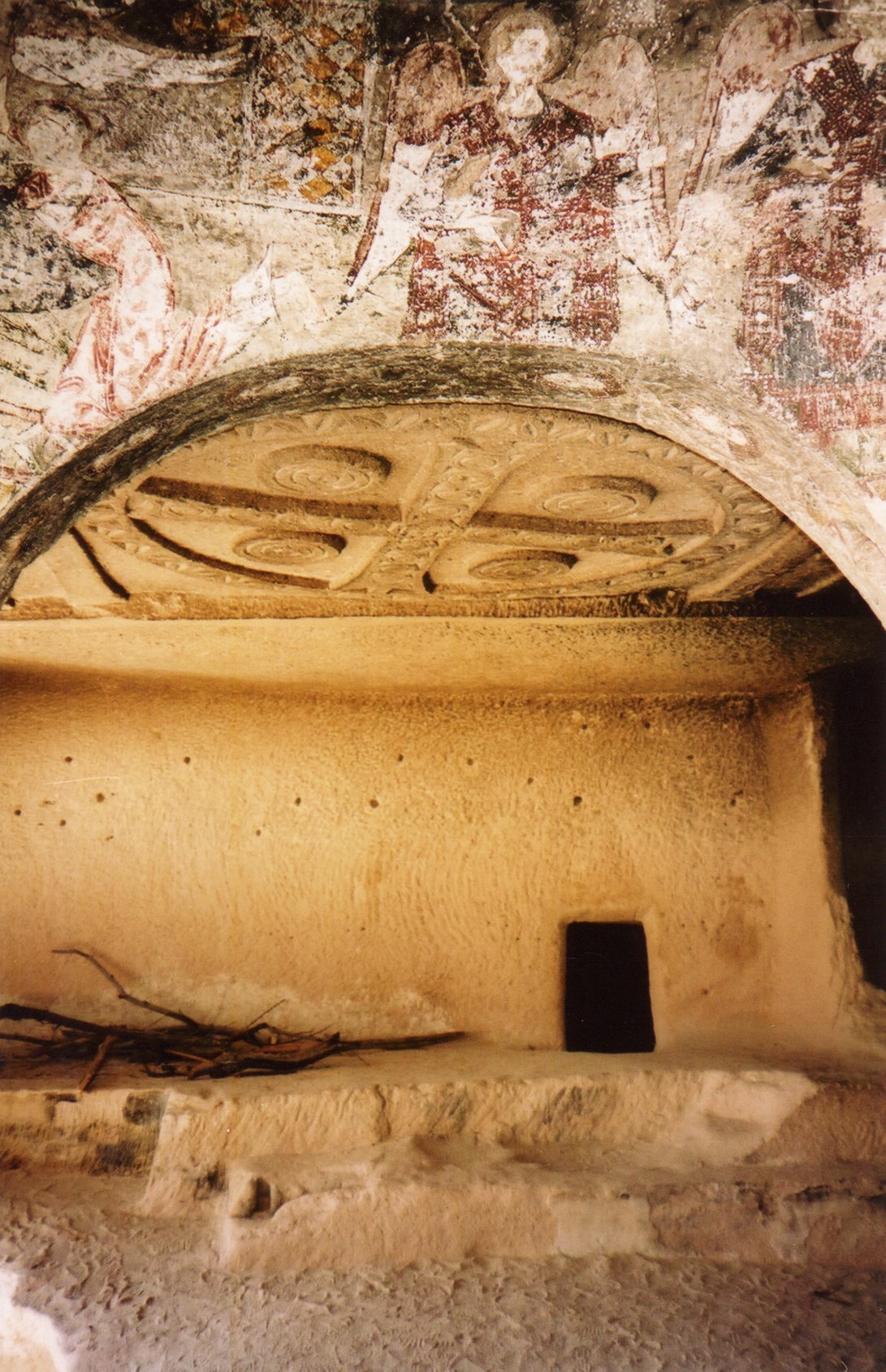
The majority date from around the 9th century onwards and some, like the Karanlik Kilesi (the Dark Church) and Azize Barbara Kilisesi (Chapel of St Barbara) feature astonishing Byzantine frescoes that look as if they were just painted yesterday. Entry to the Dark Church isn’t included in the museum ticket or museum passes (see more information below), but don’t miss it.Other highlights of the museum are Tokalı Kilise, the 11th century St Basil Chapel dedicated to the saint born in Kayseri, the provincial capital where I lived and worked for two years, Elmalı and Yilanlı churches, as well as Kizlar (Girls’) Monastery.
For a more detailed description of the churches, chapels and monasteries in the Göreme Open Air Museum, I recommend you read the Lonely Planet website entry.
Ilhara Valley*
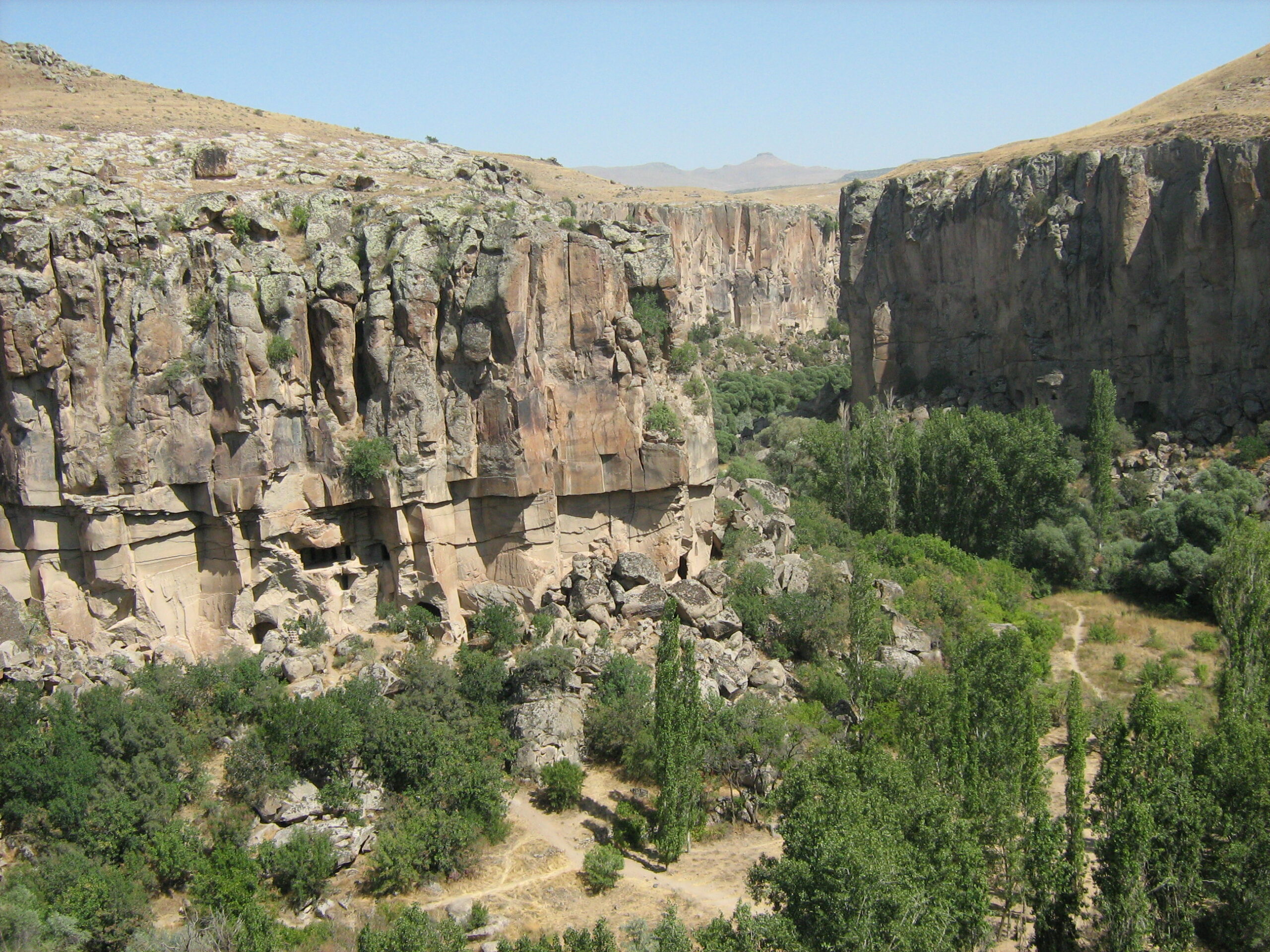
The flat plains surrounding Ilhara Valley are coloured by the rich golden ochre palette of the Cappadocia region. Suddenly they give way to a deep cut in the landscape, revealing a subterranean landscape verdant with poplars fed by Melendiz Çayı, a mountain stream. Fresco-laden rock churches dating back more than a millennia lie hidden amongst the trees while riverfront restaurants, offering dining platforms suspended over the water, are a feature of Belisirma village.
The valley is 14km long and up to 100m deep in some places. One of the easiest ways to visit Ihlara Valley on a Green Tour, described in the Other Practical Tips section at the end of this post.
Kaymakli*
Called Enegüp in ancient times, Kaymaklı was rediscovered in 1964. With four levels open to visitors out of what experts believe is a total of eight making up the complex, it’s the second most important underground complex in the region. During the 6th to 9th centuries thousands of people were able to shelter from Arab raids here. The caves are quite large and well-lit and the tunnels not as steep as in other underground complexes so it’s a good option for anyone concerned they might experience claustrophobia. You can reach this site by dolmuş from Nevşehir.
Mustafapaşa*
When I first when toMustafapaşa, it was just another small Cappadocian village. The remaining rock churches were sadly neglected and by the looks of the burnt wood and ash on the ground inside them, they made a cozy setting for nighttime barbecues. That was a long time ago.
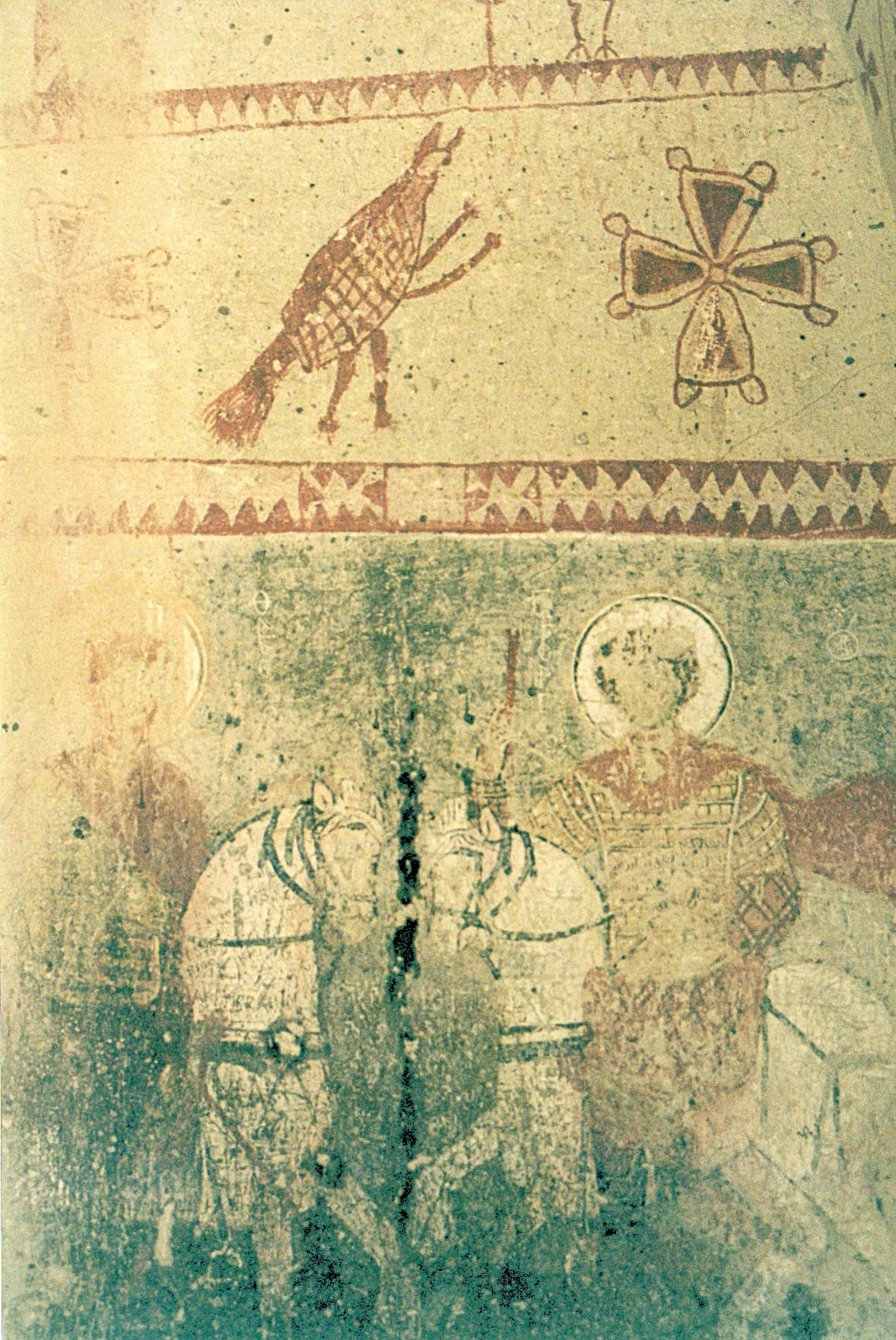
Now Mustafapaşa offers you the chance to see a more traditional side to Anatolia. The village, set over five small hills, was formerly known as Sinasos, and contains a rich collection of civil and domestic architecture thanks to the Karamanlı, the Orthodox Christians of Türkiye who once lived here. Two churches, mosques, more than 30 chapels and stone houses were carved into and built from tufa in the 19th century, ornamented with fine examples of stonemasonry and wood craftmanship. By the beginning of the 20th century, Mustafapaşa was a wealthy, modern Cappadocian town, with a focus on religious, educational and cultural institutions, utilising modern art styles and ways of living.
Although commerce was once the mainstay of the village, its 1,300 inhabitants are now largely involved in agriculture and tourism. However life here is less hectic than elsewhere in the region so you get the chance to see a Cappadocia similar to the one I first fell in love with.
Mustafapaşa is also home to the Cappadocia Art and History Museum. Set in an historical mansion, the museum houses and enormous collection of handmade cloth dolls, known as kitre or tragacanth dolls.
Nevşehir
Nevşehir has come a long way since I first went there every week for it sprawling street market full of farmers selling produce, carrying large wads of cash wrapped up in newspapers ready to take to the bank. At the time it was exceedingly dusty, not least because the main street was dug up and resurfaced every summer like clockwork.
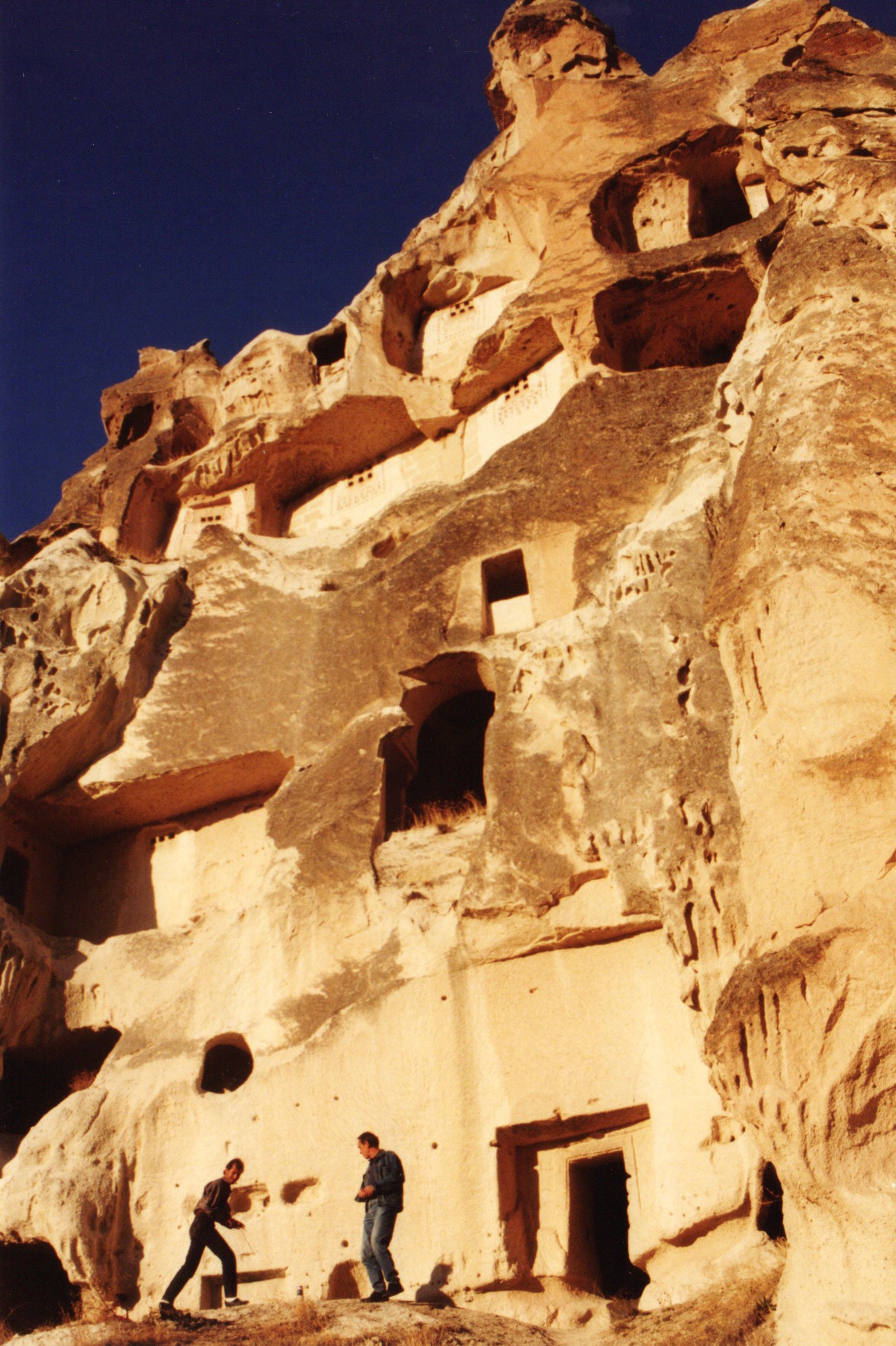
In ancient times the city was known as Nyssa and until the 21st century, it wasn’t usually on any Cappadocia itineraries. Now it is. Unfortunately the Archaeological Museum has been closed, pending the construction of a new building, date unknown, but if you’re a mosque fan like me you’ll appreciate Kurşunlu Camii from 1726. Nevşehir castle, actually a large stone fortress, was first built by the Selcuks in the early 13th century, then rebuilt by Damat Ibrahim Paşa in the 1720s. He was a Grand Vizier to the Ottoman sultans in the 1720s andNevşehir was his hometown, so he went all out. Today the inner fortress has pretty landscaped gardens and affords good views over the city.
If views leave you cold, Kayaşehir, the “rock city” carved into the rock mound below the castle, won’t. Its discovery was announced with great fanfare in 2014, after work on the foundations for a new public housing project unearthed a large underground complex. Apparently the residents of around 1500 buildings demolished for the project new had known about it all along. The complex opened to tourists in 2020, and although smaller than others in the area, Kayaşehir still gives you a good idea of what life was like underground, sans crowds.
Ortahısar
When I first stayed in Turkey, Ortahısar was mainly known for a couple of tempting antique shops and a rocky outcrop. It’s a place in Cappadocia that holds special significance for me because I attended my first ever kına gecesi here, an all-women’s night to celebrate the upcoming wedding of a well-off local woman.
That rocky outcrop, Ortahısar Kalesi, translating as Middle Fortress, was used as such during the Byzantine era and at 18 metres high, towers over the low-rise buildings surrounding it. Now it’s a museum. In order to appreciate the scenery you have to climb a series of metal ladders and narrow carved stairways to reach the viewing platform halfway up. It’s extremely steep in parts so good shoes as well as a good head for heights are essential.
Paşabag (Valley of the Monks)
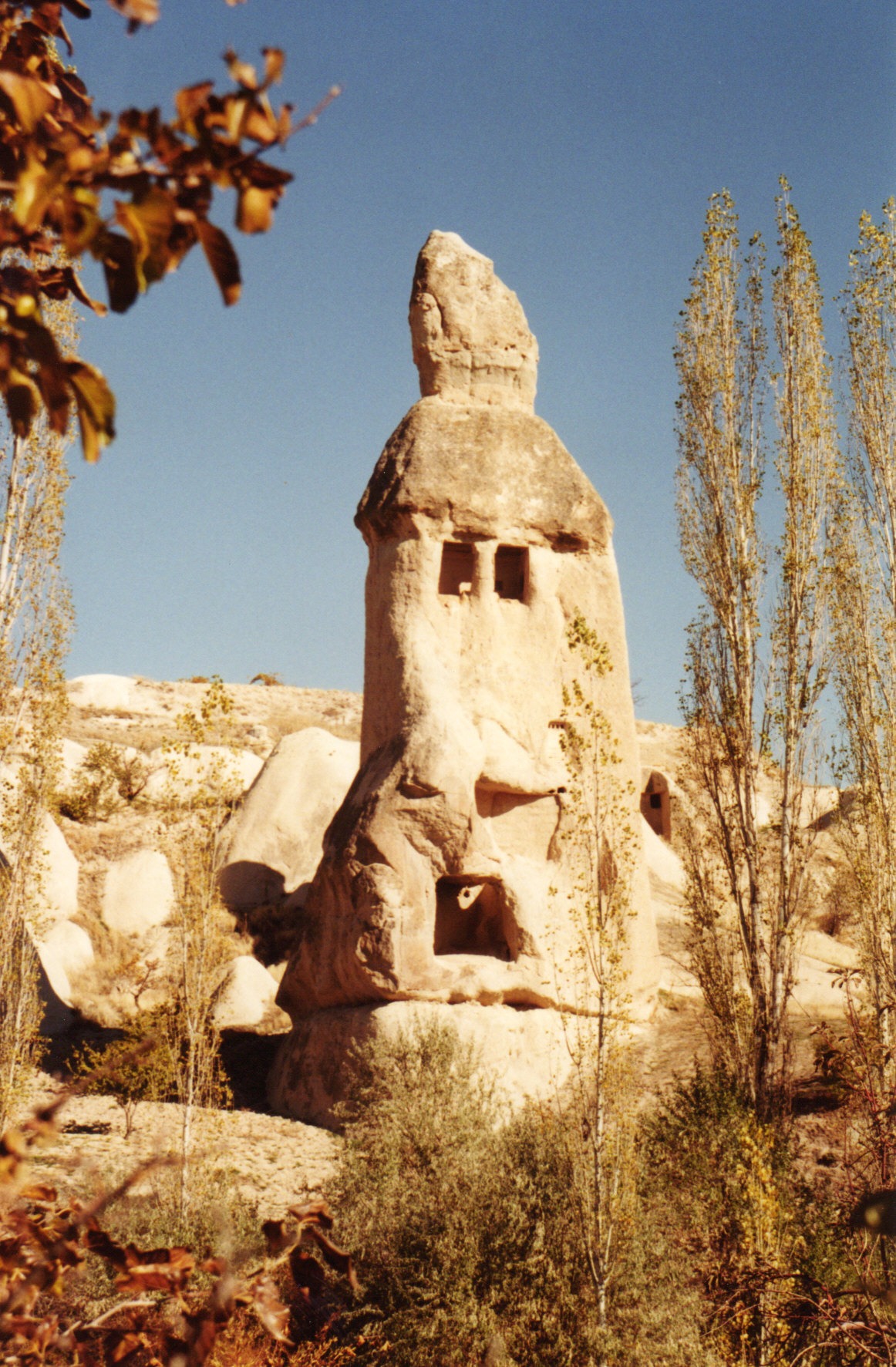
Paşabag Valley, near Zelve on the Göreme-Avanos road, is also called the Valley of the Monks after the towering peribaca that look like people wearing hooded cloaks, similar to those worn by monks in medieval times. Many of the fairy chimneys have a single point, but some have double and even triple crowns. Historically this valley is linked to early Christian monks, including St. Simeon who lived a secluded life here in the pursuit of solitude and meditation.
Pigeon Valley
These days Pigeon Valley is popular with tourists because it’s as picturesque as it is long. At 4.1km it’s one of longest valleys in Cappadocia but when I first saw it, the main focus was on the dovecotes themselves. They were filled with pigeons and poo, technical term guano, used by locals to fertilize their gardens. Further back in time the yolks from the pigeon eggs would have been used in the creation of the many frescoes that line the ceilings and walls of the hundreds of cave churches and chapels throughout Cappadocia. In the fresco secco method, the production of dry frescoes, there has to be a binding medium to help the paint stick to the surfaces and yolk served this purpose for hundreds of years.
Red Valley (aka Rose Valley)
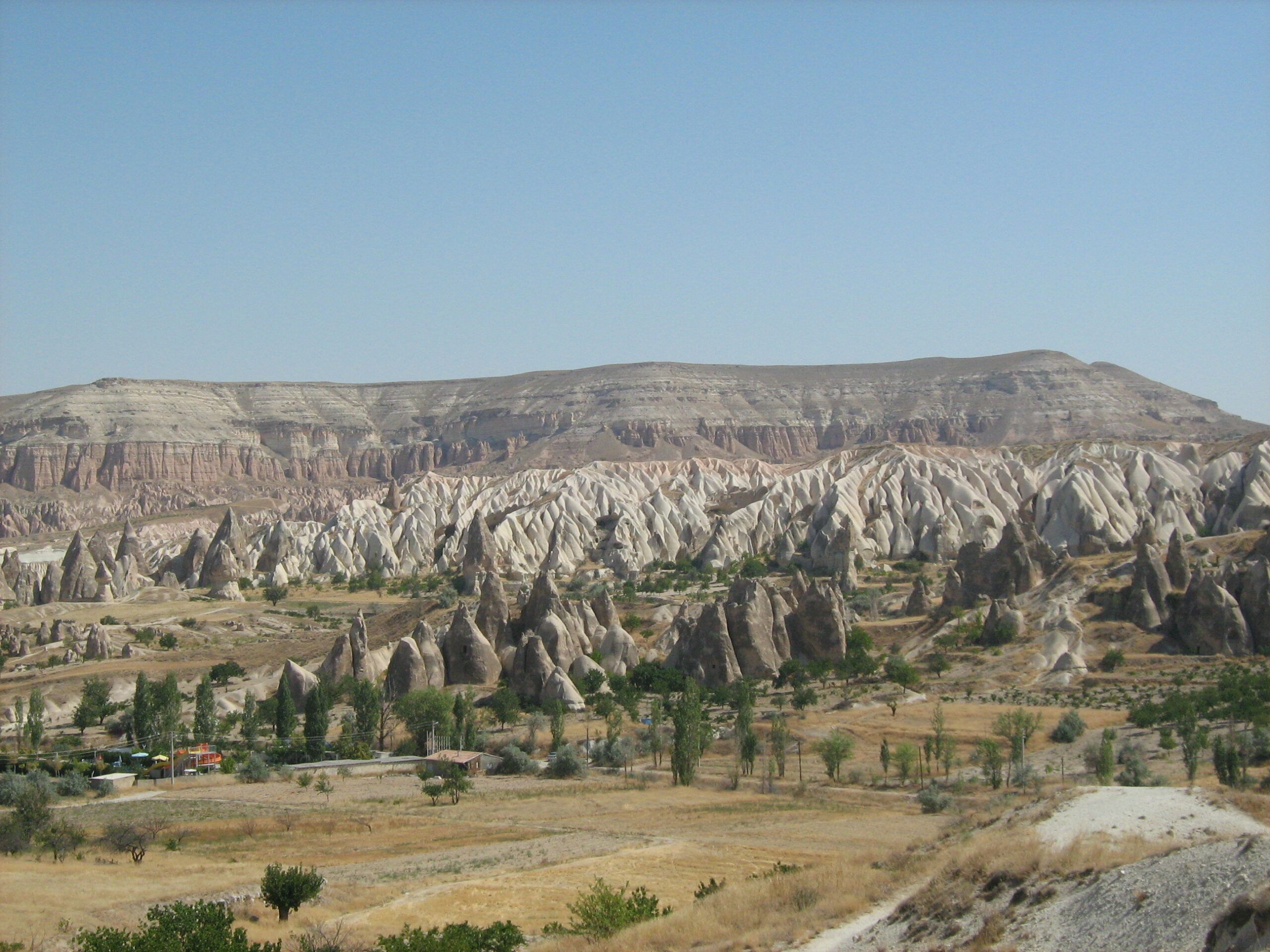
Red Valley, named for the rose coloured hue of the rock formations, is a series of interconnected valleys in between Göreme and Çavuşin. Seen from a distance it looks like waves in a curious ocean, rippling across the valley floor. Up close it makes for challenging hikes. I should know. Together with John, another Australian I met back in 1990, I scrambled, slide and clawed my way up to the table top in a four hour ‘hike’ that left me with a bloody knee and a great sense of satisfaction. Fear not though, there are easier walks than the one I did if you’re so inclined. Otherwise just go there to take in the sunset views.
Selime Kalesi (Selime Castle)*
Called a castle due to its size and position, towering high above the plains giving a perfect view of potential threats, Selime was actually built to be used as a monastery with a castle at the top. It dates from the 8th to the 11th centuries and was the training ground for the clergy active in Cappadocia. It has an astonishing array of magnificent rooms carved from tufa including a huge kitchen with a large chimney, a corridor with a high roof used to lead the camels that came to Selime as part of caravans travelling across the vast landscape of Cappadocia into the safety of warm stables and three churches. The churches are still majestic, with columns carved out of solid rock, a dome and the very faint remains of what must have once been sublime frescoes.
My memories from my first visit to Selime are scrambling up the steep slope to reach the entrance, and marvelling when our guide told us scenes from the original Star Wars movie had been shot here. I was thrilled because Star Wars was the first big blockbuster film I ever saw at the cinema on my own, with friends rather than family. Turns out he meant Dünyayı Kurtaran Adam, the Turkish version of Star Wars. Nonetheless Selime Monastery is an impressive sight and part of Green Tour day trips.
Uçhisar*
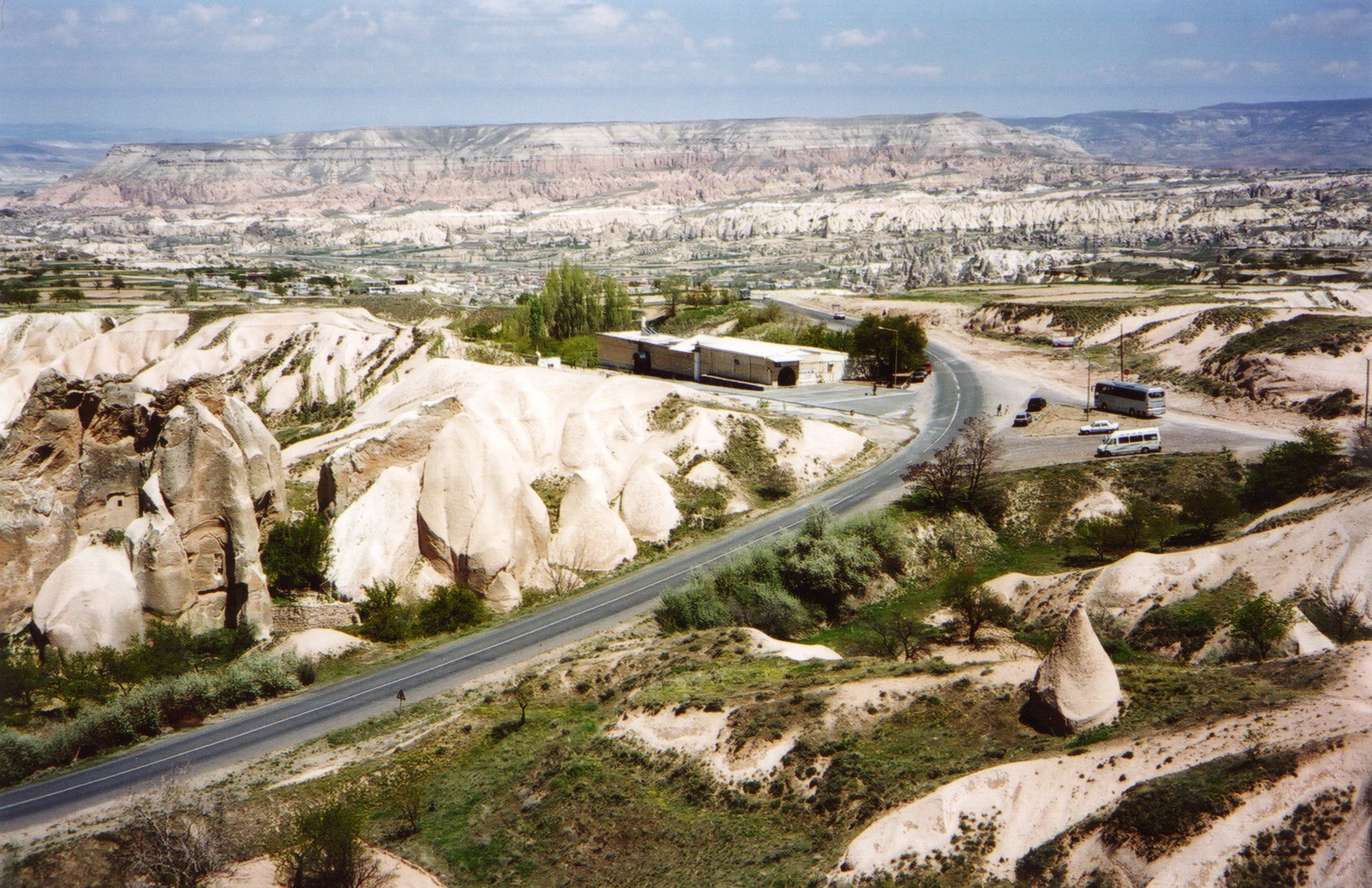
Uçhisar is best known for Uçhisar Kalesi. This tall craggy outcrop of rock was once home to dozens of people and when I climbed to the top in 1990, you could still see the shallow troughs we were told had been graves. I don’t know the truth of that but I do remember the shiver that ran down my spine when I stepped over one to admire the view. It’s said there are tunnels beneath the outcrop that connect to other parts of the region, but no trace of them has been found.
These days it’s a very popular viewing point but it’s also part of the country’s cultural heritage, so be respectful, as in don’t make like this tourist who used the flag pole to demonstrate her pole dancing skills.
In addition to climbing the castle, it’s easy to spend a few hours wandering the narrow streets where you can admire the restored stone houses now used as hotels and private art galleries, then imbibe at a number of small wine houses showcasing Turkish wines. Definitely schedule your so you can have lunch or dinner at Uçhisar Kadineli Restaurant Women’s Hands restaurant. The food is delicious but more importantly, profits from this women’s co-operative go towards getting girls educated and they provide free meals to local families doing it tough.
Ürgüp
Ürgüp has long been known for its grapes, and although the white wine is considered better than the red, I’m still a fan of Turasan’s cab sav and merlot. It’s a good place to go on a wine tasting tour. If you’re seriously into wine want to learn everything there is to know about Turkish wines, The Essential Guide to Turkish Wine: An exploration of one of the oldest and most unexpected wine countries 2nd edition, by Andrea Lemieux, tells you everything there is to know.
Wine aside, there isn’t a great deal to see in Ürgüp although the town was an important centre in the past. It’s had many names starting with Osian, then Hagios Prokopios under the Christians during the Byzantine era. The Selcuk’s renamed it Bashisar and the Ottoman’s called it Burgat Kaalesi. The town has expanded enormously since I first saw it, with the original historical streets crowded out by modern houses and new town centre.
Like Ortahısar and Uçhisar, Ürgüp has its own castle. Kadıkalesi, the Judge’s Castle, once contained the richest library collection in Anatolia. The books are long gone but it’s still possible to enjoy the view from the top, seven floors up, accessed via a 700 metre long tunnel. Nearby Temenni Tepesi, Temenni Hill, contains the tomb of Kılıçaslan Gazi from 1288.
Zelve*
I love Zelve because it’s like an outdoor adventure playground for adults. Zelve was a monastic retreat from the 9th to the 13th century and there are dozens of cave rooms, chapels and churches to explore on different levels, connected by metal walkways and stairs. The site is spread across three valleys, and is rather ramshackle in comparison to other complexes in Cappadocia due to an earthquake that shook the area in 1950.
The first valley contains a değirmen, a mill with grindstone and Üzümlü Kilise (Grape Church) alongside Balıklı Kilise (Fish Church) featuring primitive paintings of fish figuring in one of the primitive paintings. The third houses asmall, plain rock-cut mosque. In between there are plenty of caves to scramble through. Good for travellers with strong imaginations and a reasonable level of fitness.
How to get around Cappadocia
Green tour vs red tour of Cappadocia
There have been green and red tours running in Cappadocia since the 1990s. Recently I’ve seen FB posts where people wonder which one is ‘better’ to take, so here’s an overview for you to make up your mind, based on your personal interests, budget and timeframe, rather than a random cyber person’s opinion. Always check with your chosen tour company as to what is and isn’t included, as well as the amount of walking/hiking involved, before you book.
Green Tour
The Green Tour takes you to the southern part of Cappadocia which is harder to reach if you don’t have your own transport.
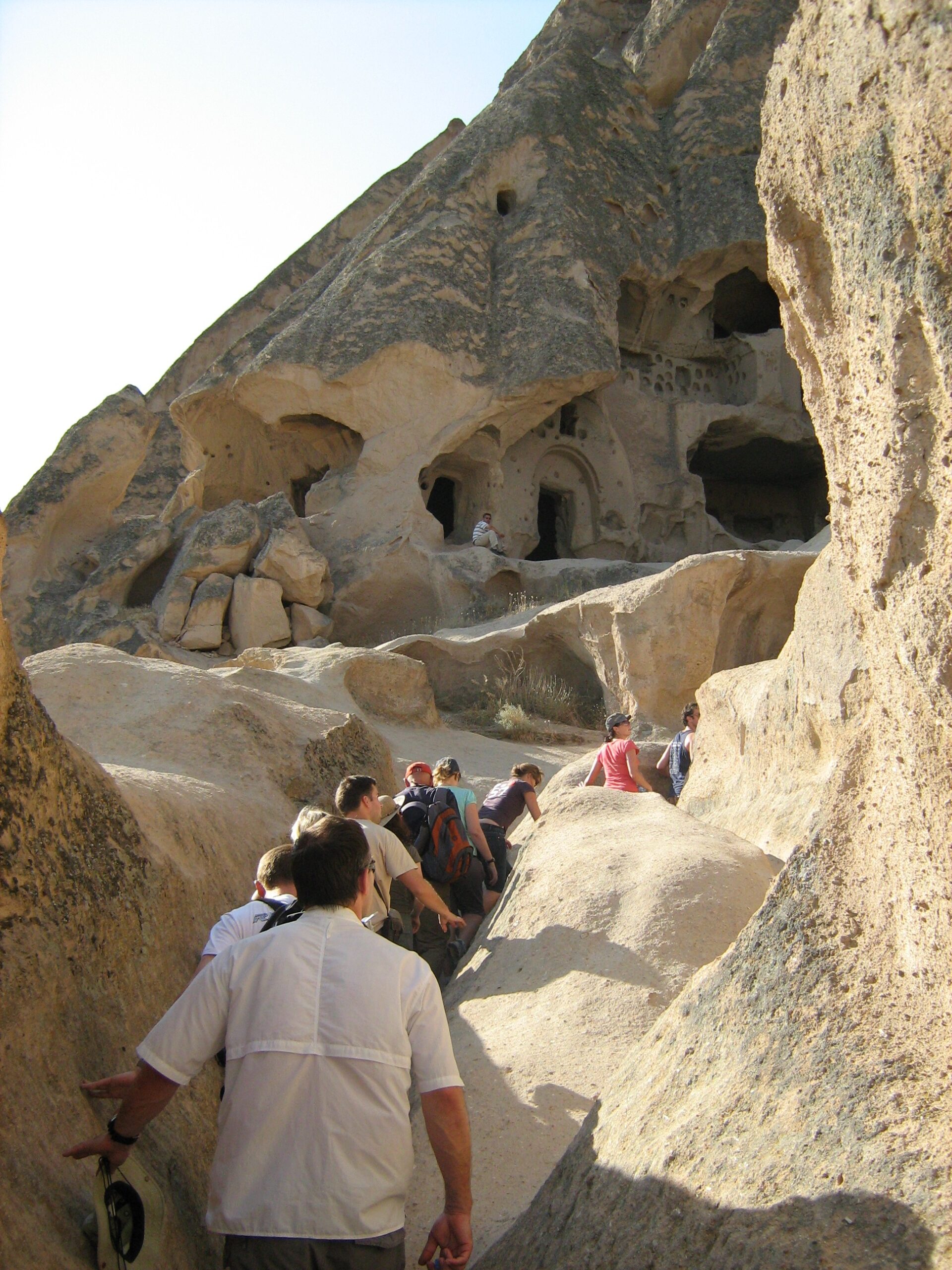
The Green Tour includes: Göreme Panorama, Pigeon Valley, Derinkuyu Underground City, Nar Lake, Ihlara Valley, Belisirma village known for its beautiful river and traditional Turkish restaurants, Selime Monastery and Yaprakhısar Panorama.
Lunch is included as well as stops for shopping opportunities at various workshops. You don’t have to buy anything but after seeing the craftsmanship involved, chances are you’ll want to.
Red Tour
The Red Tour takes you to a lot of sites you can reach by minibuses and dolmuş, as well as to some you can get to on foot. It’s very useful if you have limited time, children to wrangle or if you or members of your party aren’t keen on getting up close and personal with the locals on public transport.
The Red Tour includes: Uçhisar Castle, Zelve Open Air Museum, Paşabağ, Derwent (Imagination) Valley, a pottery workshop and Love Valley. Lunch included.
What to consider when taking a balloon flight in Cappadocia
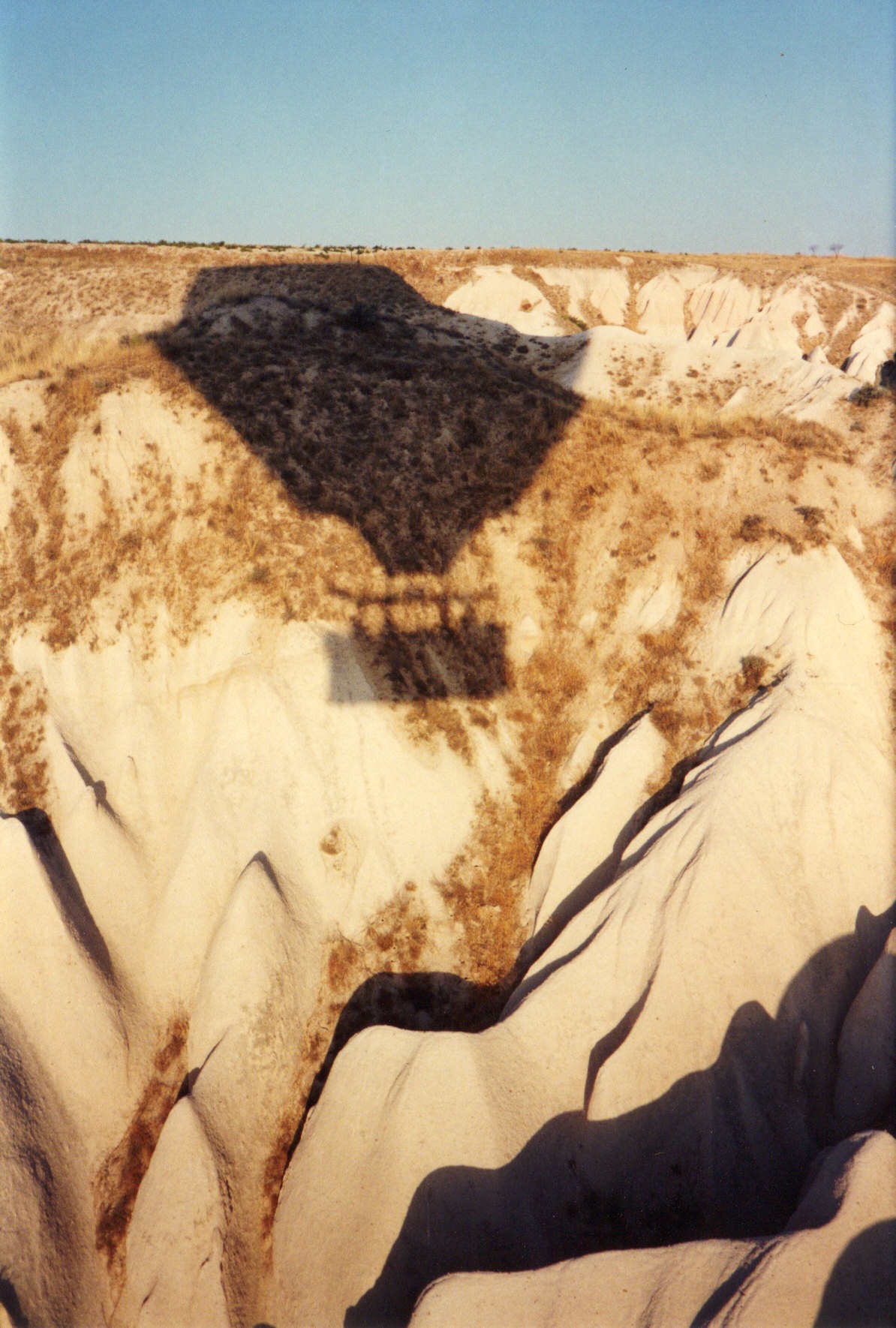
I finally went on a balloon flight over Cappadocia with my Dad in 2007. It was a wonderful experience for the both of us and one I’ll always treasure now he’s no longer alive. There were about half a dozen balloons in the air in total that morning, so it was easy to believe we were navigating the world alone.
These days the numbers are much larger and safety rather than price should be your first concern. The maximum number of balloons allowed to ascend is 150 per day. Any more and the airspace will be too crowded and unsafe. They only allow sunrise flights because weather thermals that occur in the afternoons make flying dangerous. Balloon operators recommend you book your flight for the first morning of your stay because if adverse weather conditions set in, all balloon flights will be cancelled. Turkish civil aviation representatives make this call and it’s non-negotiable.
It’s best to book through your hotel or direct with the balloon companies themselves (via their websites). That way, if your flight is cancelled due to weather concerns, they can either reschedule it or refund your money, neither of which is guaranteed by 3rd party websites.
Other Practical Tips for your Cappadocia trip
Museum passes
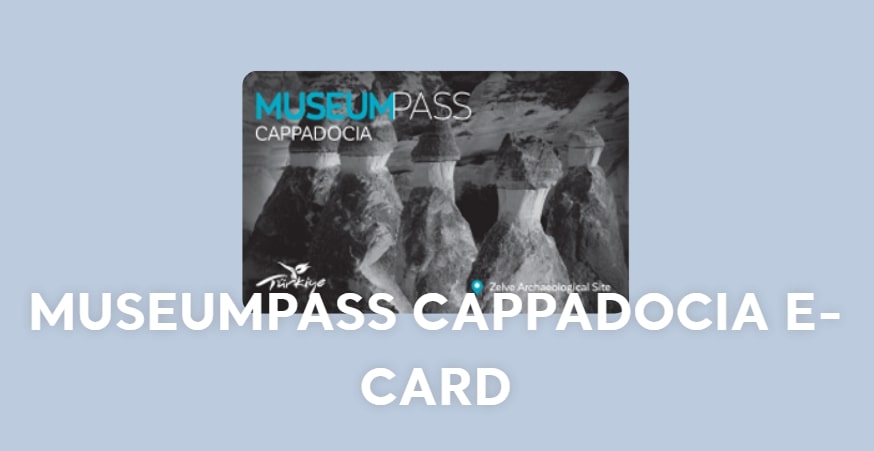
A lot of websites offer museum passes for both Istanbul and Turkey, but there is only one official site. I recommend using the official Turkish government website because you don’t pay any commission and they don’t try to trick you by including sights that are actually free to enter in the lists of places covered by the passes, as many private websites do.
Buying a carpet in Cappadocia
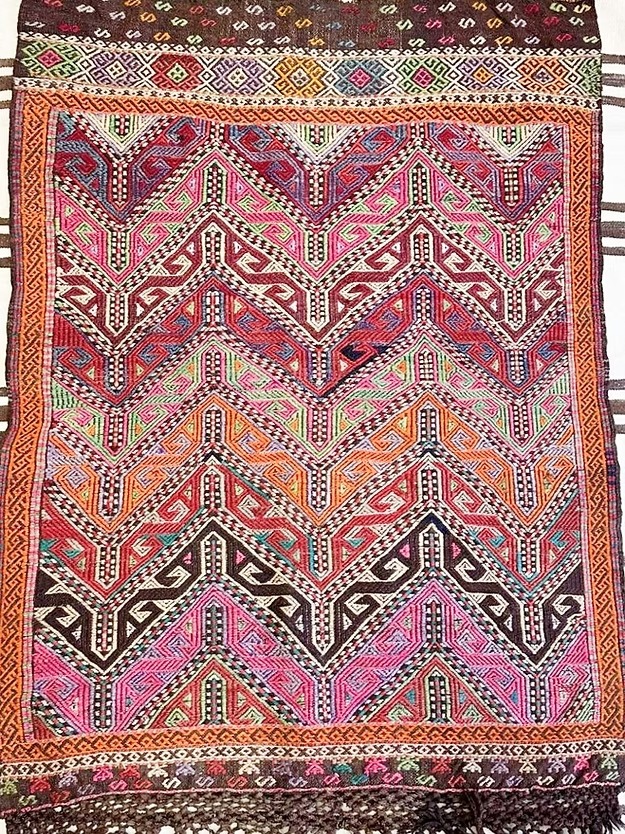
The topic of buying a carpet in Turkey really deserves a post of its own, so I’m going to hand you over to Ruth Lockwood, a New Zealand woman who’s lived and breathed carpets in Cappadocia for over 35 years. She really knows her stuff and is happy for me to share her post from here the Tribal Collections Carpets website.
Cave rooms and where to stay
Someone recently called cave room accommodation in Cappadocia a gimmick and I was horrified at how ignorant people can be. True, some cave rooms don’t have outside windows which was that individual’s main cause for complaint but they are one of the most authentic forms of accommodation you can find in Cappadocia. They’re carved metres deep into rock and have been providing shelter for thousands of years.
There are dozens of options available but if you want to get the best value for money, book in advance to avoid disappointment.
Staying in touch

eSIM are the way to stay connected while you’re away. I recommend Truely, an eSIM provider working with local telcos which means that unlike other esims, you can buy one after you arrive in Turkey and top up when you need more. I particularly like that you can opt for 1 to as many days connectivity as you need, rather than being limited to 1 week, 15 or 30 days. Truely eSIM are straightforward to install and activate but if you have any problems their responsive Whatsapp customer service is available 24/7.
Use my code: insideoutinistanbul and get 5% off when you order through the Truely website.
Lastly, even if I never claim on it, I always take out TRAVEL INSURANCE. I recommend Visitors Coverage.
That’s it from me, except to say however you travel, stay safe and have fun! Iyi yolculuklar.
